Most frogs are slimy creatures that can secrete toxins and irritate the human skin. They can also be noisy at night, disrupting your sleep.
So, how to keep frogs away from your house? To keep frogs away from your house, you have to eliminate the things that attract them to your home. These could be fountains or other water features. Make it a habit to turn off the lights at night to prevent attracting bugs, causing frogs to go to your place.
We will cover more about the things that attract frogs to your property, and which frogs are poisonous.
What Attracts Frogs to Your House?
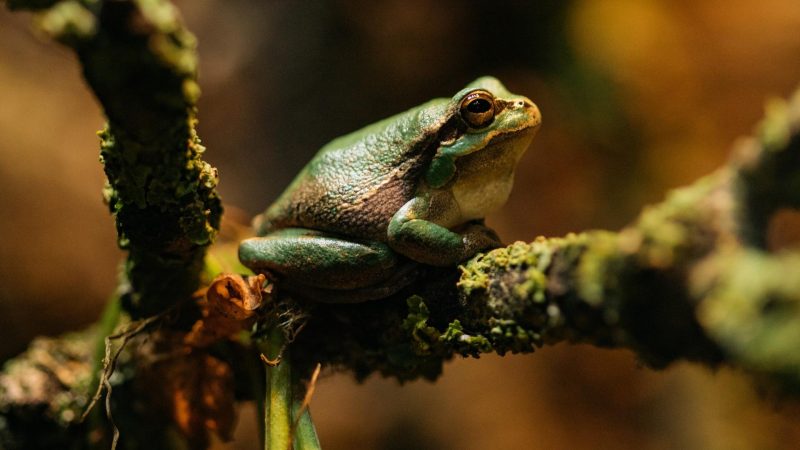
If you found several frogs in your place, this means that they found something attractive on your property. Some of the things that draw frogs to your area are:
Swimming Pools
Frogs find swimming pools as one of the best areas to spawn and reproduce. If you find frog eggs or tadpoles in your swimming pool, make sure not to swim into it and call your local pest animal control unit.
There are particular laws to follow in moving frog spawns, so call the animal control unit if you don’t know what to do.
Standing Water
Frogs love to dip themselves in water. If they find standing water in your yard, they’ll jump right into it. Thus, make sure to get rid of any standing water surrounding your place to avoid attracting frogs to your area.
Frequent Watered Lawn
Watering your lawn too often can attract frogs to your place since they love damp environments. During the summer season, frogs tend to go to frequently watered lawns to keep themselves wet. Thus, it would help if you water your lawn once or twice a week only.
Leaked Hose Water
Another thing that attracts frogs to your property is the leaked hose water. This allows frogs to take a quick dip to dampen themselves. So, it’s best to inspect your hose for leaks and repair it right away to prevent other pests from coming to your home.
Bright Lightings
Bright lightings also attract frogs to your premises. So, it would help to turn off your lights when you go to bed to deter frogs from your place.
Tall Grass
Tall grass also attracts frogs as it tends to retain moisture, which frogs love. This also provides them with a good hiding place where they can rest. Keep your grass under 3 inches long or ideally 2 1/2 inches.
Rotten Food
Although rotten food isn’t part of a frog’s diet, this attracts bugs that frogs like to eat. Thus, make sure to clean up rotting food or fallen rotten fruit to prevent attracting small flying insects that frogs love to eat.
What Time of Day Do Frogs Come Out?
Frogs are nocturnal animals, so you can usually find them active at night. During the day, you may also notice them sitting still in damp places, such as rotting logs, muddy areas, or rocks.
Why Are There Frogs in My Yard?
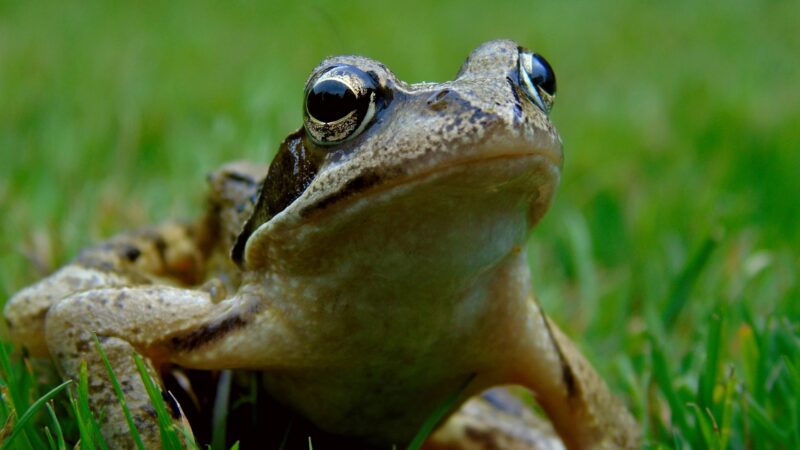
Having frogs around your home implies that there are things that attract them to your property. If you’ve got water features in your properties, such as a fountain or pond, these will bring several frogs to your place.
In addition, if you’ve got an existing bug problem, frogs will love to go to your area to feed on these insects. Some of the things that attract frogs to your property are:
Insects
Insects such as flies and mosquitoes are considered to be the main food source of frogs. So, if you have existing pest problems outdoors, expect frogs to gather in your vicinity.
Water
Amphibians love to stay where water is near. This is because they love keeping themselves soaked. Furthermore, they also get most of their food from there, such as mosquitoes and other insects.
Shelter
In most cases, frogs love to stay still under shade or shelter. So, if you have thick gardens or tall grasses, they’ll make your area a place to rest.
Night Lightings
Nightlights don’t attract frogs, but they attract insects that frogs love to eat. Thus, the more lights you use in your yard at night, the more you’ll likely attract insects that will also draw frogs to your place.
Are Frogs Poisonous?
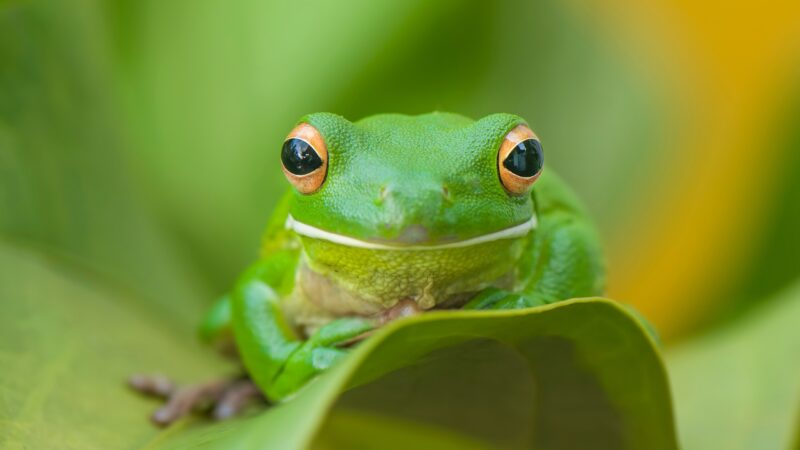
Several frog species are known to be poisonous, such as:
Poison Dart Frogs
Poison dart frogs are part of the Dendrobatidae family that has beautiful, diverse colors. In addition, they’re considered to be one of the most toxic animals on the planet. These frogs are approximately 1 inch and are highly toxic. Those that reach two inches can kill ten grown men due to their toxicity.
The poison dart frogs comprise several species, and they are:
1. Phantasmal Poison Frog
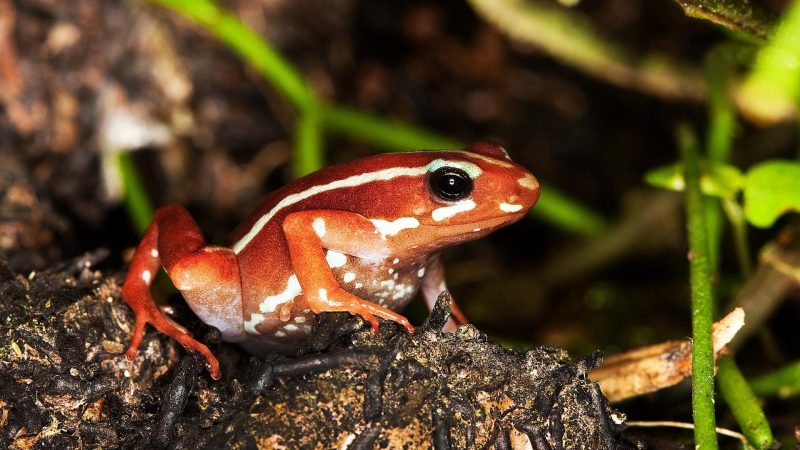
They’re exceptionally small, about 1 1/2 inches, and carry a poison that can kill an adult human.
2. Blue Poison Dart Frog
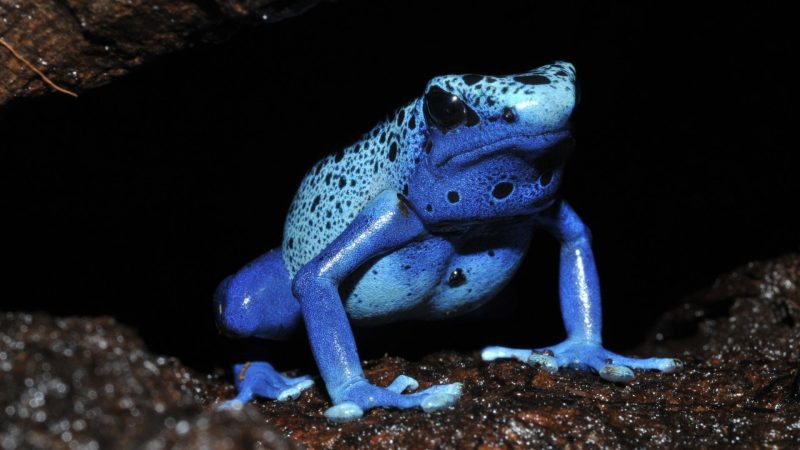
Blue poison dart frogs are among the toxic frogs. However, they can lose their toxicity in captivity, which makes them popular as pets.
3. Dyeing Dart Frog
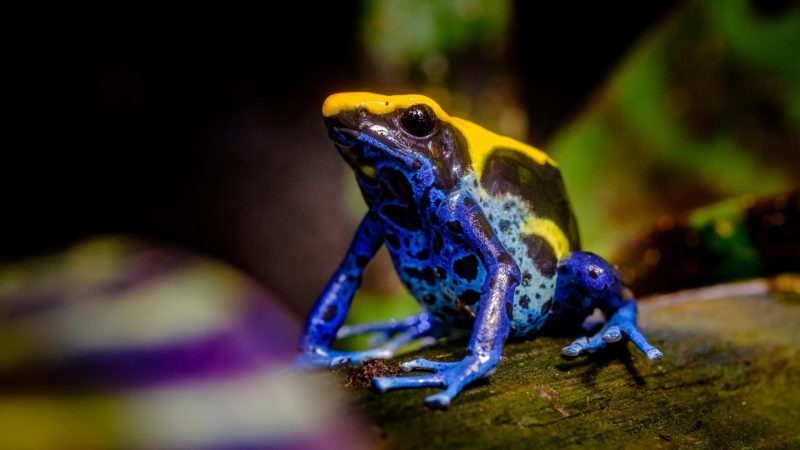
These frogs are among the largest species of poison dart frogs but only measure approximately two inches long. They’re less toxic and possess bright colors that deter nearby predators from eating them.
4. Strawberry Poison Dart Frog
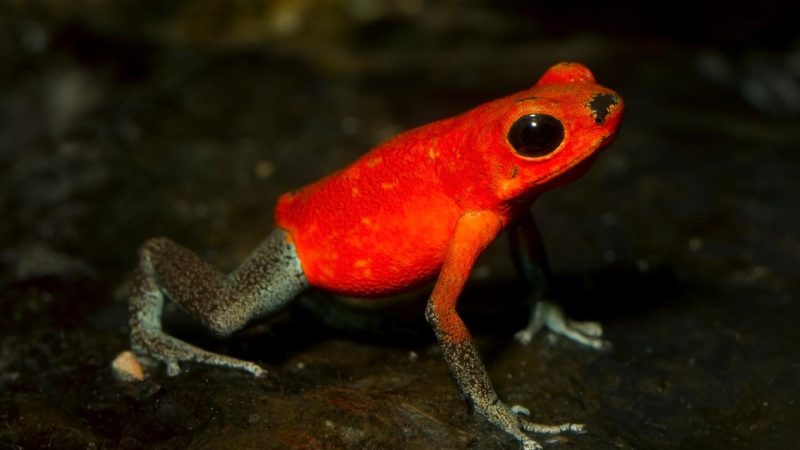
This frog is known to be the most poisonous among the poison dart frogs that exist. They possess striking colors, ranging from red, blue to green, along with some black spots.
5. Lovely Poison Frog
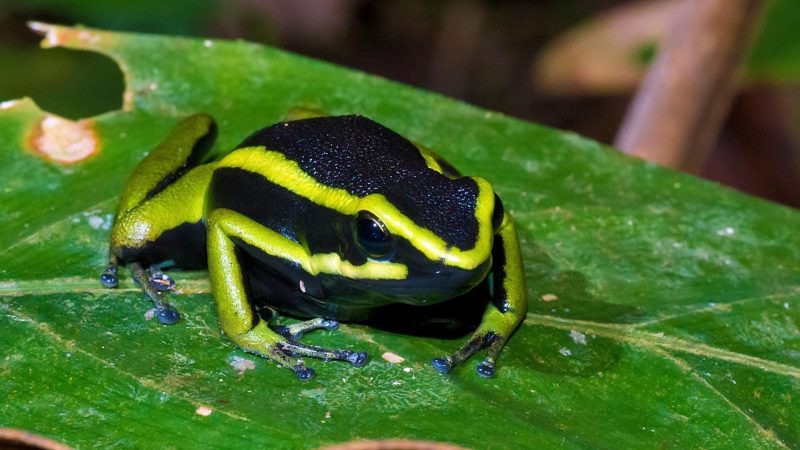
This frog species is the least toxic among the Phyllobates genus but still one of the most poisonous among poison frogs. They possess toxins that cause heart failure to those predators that eat them.
6. Golfodulcean Poison Frog
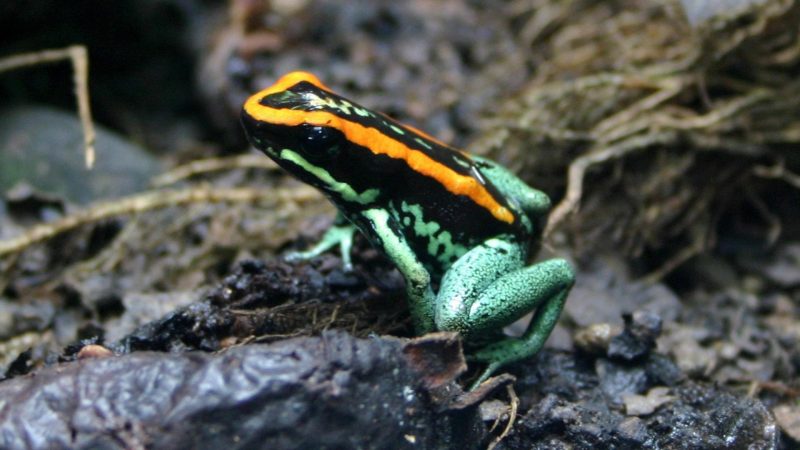
The Golfodulcean poison frog is one of the most beautiful species of the genus Phyllobates and fourth of the most toxic. Its poison can cause mild seizures, excruciating pain, and even paralysis.
How Can You Determine if a Frog Is Poisonous?
- They possess a variety of bright colors and are highly attractive. However, make sure not to touch them as they have toxic skin.
- These poisonous frogs are usually about 0.75 to 1.5 inches in length.
- They show the green color of their skin to warn the predator nearby not to eat them. The green color serves as a sign that they’re toxic and can’t be eaten.
Why Keep Frogs Out of Your Yard?
Frogs frequently gather in big groups, which can ruin gardens and lawns in addition to being unsightly. Some species can be dangerous to youngsters as well as to domesticated animals like dogs.
Numerous other yard pests, such as snakes and insects, are drawn to frogs as well. They are all susceptible to further damage in your house from these pests. Also, they are frequently a sign of poor drainage, bug infestations, or too much wetness.
How to Keep Frogs Away From Your House?
The following are some ways you can do to keep frogs away from your house:
1. Get rid of ponds or fountains in your home. These water features are one of the reasons why frogs are attracted to your place.
2. Keep your grass short, ideally 3 inches below.
3. Don’t water your lawn daily. Make it at least once or twice a week to prevent attracting frogs to your place.
4. If you have a swimming pool, make sure to frog-proof it. You can do this by:
- Installing a secure pool fence where frogs cannot fit through.
- Keeping your grass short.
- Covering your pool when not in use.
- Keeping your pool warm.
5. It’s also best to get rid of the things that attract these frogs, such as:
- Planters
- Pooling water
- Garbage bags
- Piles of leaves
- Water bowls of your pets
How to Get Rid of Frogs in Your House Humanely?
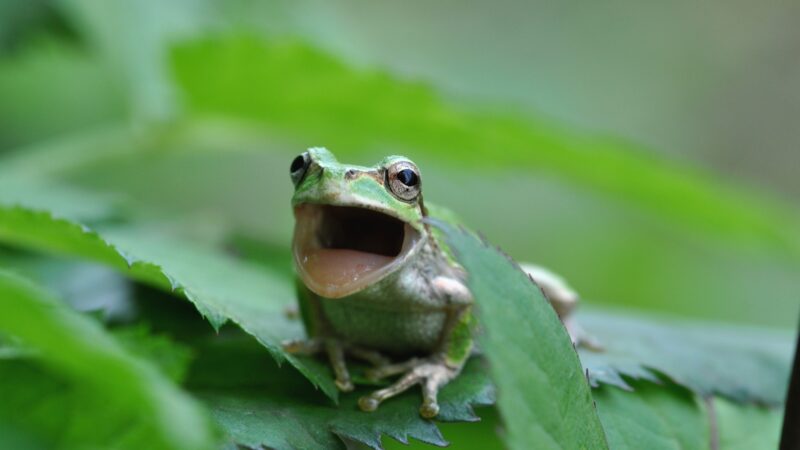
To get rid of frogs as humanely as possible, you may use the given methods below:
Coffee Grounds
Coffee grounds are one of the best ways to get rid of frogs in your place due to their acidity. Just sprinkle the coffee ground in your garden, and it’ll cause frogs to feel uncomfortable. This is due to the acidity of the coffee that makes frogs feel uneasy walking on the ground.
Saltwater
Frogs have sensitive skin, and spraying them with saltwater will let them feel some sting on their feet. To make the salt solution:
Step 1: Get a clean spray bottle and at least 3 tablespoons of salt.
Step 2: Put the salt into the spray bottle. Add a little portion of water.
Step 3: Shake the solution lightly. Make sure that the salts are dissolved.
Step 4: Spray the mix into your walkways and other surfaces. This will create many stings on the frog’s feet.
Vinegar
Vinegar is known for its acidity. This solution gives the same effect as salt water. To make the vinegar spray:
Step 1: Get a clean spray bottle.
Step 2: Fill it with at least 3/4 vinegar. Also add 1/4 part of water.
Step 3: Ensure that the solution is blended well and spray it into your walkways or in areas where you frequently see frogs.
However, you must know that there’s also a downside to this solution. Your plants may get affected by this due to their high acidity.
Keep Your Surroundings Clean
The best way to repel these animals is to make sure that your property is thoroughly clean. It would also be helpful to remove all the things that attract them to your property, such as standing water and tall grass.
Add Predators to Your Yard/House
Common frog predators include birds, reptiles, snakes, and small animals. They can be scared off and deterred from invading your yard.
Proper Water Drainage
Stop supplying them with water. Additionally, it could be a good idea to drain out any ponds on your property if you aren’t going to be utilizing them for a time. If your grass is soggy or moist, you might want to use an aerator and fertilizer to assist drain the excess water from the soil.
Turn lights off
Turn off the lights outside your house. The frogs’ main source of food, such as insects, will be eliminated if you turn off your outdoor lighting at night.
Related: How to Get Rid of Frogs | Effective Strategies for a Frog-Free Space
List of Sources
Johnson, J. (2017). Frogs: The Good, the Bad, and the Ugly. University of Florida.
Poison frogs. Smithsonian’s National Zoo & Conservation Biology Institute.
Armstrong, W. P. (2001). Poison Dart Frogs. Palomar College.
Golfodulcean Poison Dart Frog. Henry Vilas Zoo.
- How to Get Rid of Copperheads | Practical Guide - August 27, 2023
- How to Get Rid of Corn Snakes | What Makes Them Aggressive? - August 27, 2023
- How to Get Rid of Alligators | Safety Measures and Removal Methods - July 16, 2023
